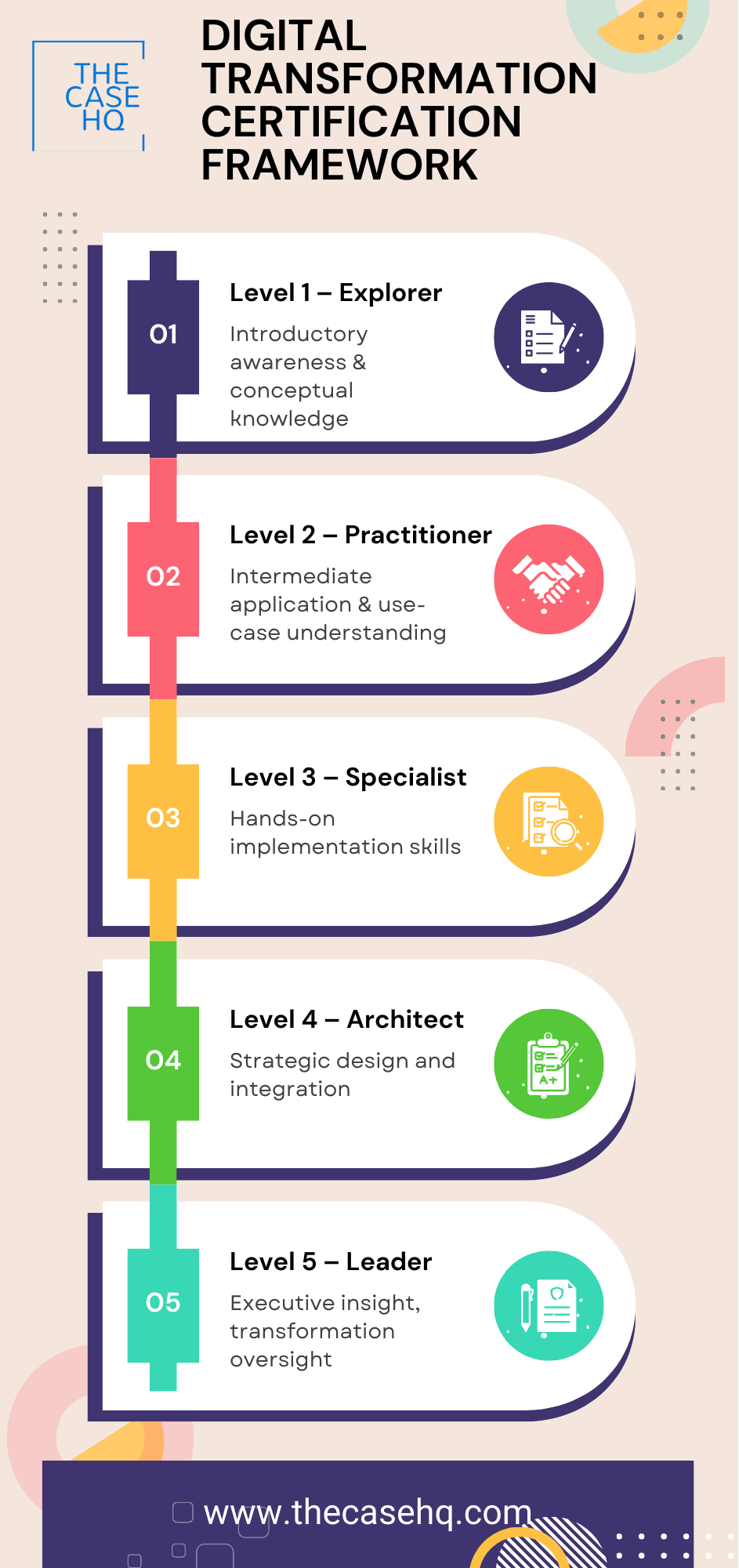
In a world where change is constant, digital transformation is the bridge between survival and success. But how do you build the right skills—step by step?
Our new Digital Transformation Certification Framework answers that question with a structured, global-standard pathway. Whether you're just starting or leading enterprise transformation, this framework is for you.
What Is the Digital Transformation Certification Framework?
This framework is a modular, stackable certification path with five progressive levels, each aligned with skills required for digital growth, leadership, and innovation. It’s built using international benchmarks like the UK RQF, SCQF, and EQF.

The 5 Certification Levels Explained
Level 1 – Explorer
Focus: Introductory awareness & conceptual knowledge
Start your journey with essential digital vocabulary, transformation awareness, and the basics of agile, data, and platforms. Ideal for new professionals and non-technical roles.
Level 2 – Practitioner
Focus: Intermediate application & use-case understanding
Gain hands-on experience applying frameworks, digital business models, and innovation tools. Perfect for project leads and middle managers.
Level 3 – Specialist
Focus: Hands-on implementation skills
Learn to implement digital strategy, manage agile delivery, and translate data into action. Designed for functional leaders and transformation teams.
Level 4 – Architect
Focus: Strategic design and integration
Develop systems thinking, design transformation blueprints, and lead integrated technology deployments across departments or geographies.
Level 5 – Leader
Focus: Executive insight, transformation oversight
Drive enterprise-wide change with strategic foresight, ethical leadership, and innovation culture. Suited for C-suite, directors, and senior consultants.
Why Choose This Certification Framework?
- Globally benchmarked against qualification frameworks
- Stackable and flexible—build your custom path
- Career-relevant: from awareness to executive expertise
- Industry-driven and future-ready
Stay updated. We will launch each level of certifications soon.
https://thecasehq.com/introducing-the-5-level-digital-transformation-certification-framework/?fsp_sid=1348
Comments
Post a Comment